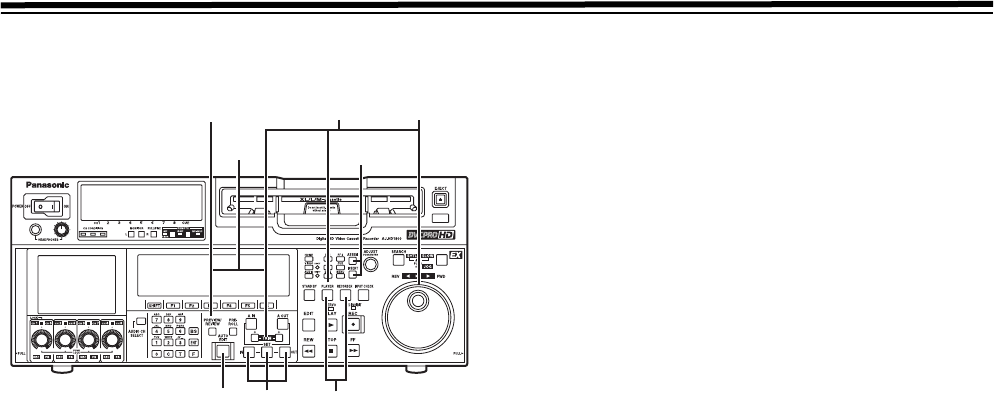
37
Variable memory function (continued)
Variable memory editing operation procedure
To perform variable memory editing operations, set this VTR,
which is connected as the recorder to the variable memory
mode, and take the steps below.
1 Select the editing mode on the <ASSEMBLE> or
<INSERT> menu.
2 Select the VTR to be operated by pressing the
RECORDER or PLAYER button.
3 Register the IN and OUT points using the SET button
and IN and OUT buttons. The player’s OUT point cannot
be registered.
4 Press the PLAYER button to select the player VTR, and
then set the initial speed using the search dial while
holding down the SET button.
5 When the SET button and PREVIEW/REVIEW button
are pressed at the same time, the tapes in both the
player and recorder are automatically prerolled, and the
player VTR plays back the tape at the initial speed
setting up to the IN point.
6 After the tape has passed the IN point, turn the search
dial to store the playback speed of the player VTR in the
memory.
7 When the tape passes the OUT point that was set by the
recorder, the storing of the playback speed in the
memory ends.
8 When the AUTO EDIT button is pressed, variable
memory editing is executed. Once editing has been
executed, the memorized speeds will be cleared except
for the initial speed which is not cleared.
9 By pressing the PREVIEW/REVIEW button, the edited
results can be checked.
<Notes>
z Whatever is stored in the memory will be cleared when the
VTR exits the variable memory mode. It is also cleared
when the POWER switch is set to “OFF.”
z Phase synchronization is not performed during playback
up to the IN point of the variable memory editing.
Therefore, depending on the VTR used as the player and
its speed setting, no guarantees are made for the
accuracy of the IN point.
z When conducting variable memory editing in the speed
range of j1.0k to i2.0k, use VTRs with which these
speeds are guaranteed for both the recorder and player.
5
1
8
9
46
2
3


















